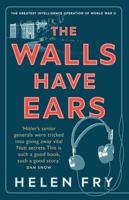Publisher's Synopsis
*Includes pictures *Includes accounts of the speech written by people in the crowd *Explains some of the influences that Lincoln drew on for the speech *Includes online resources and a bibliography for further reading *Includes a table of contents "With malice toward none, with charity for all, with firmness in the right as God gives us to see the right, let us strive on to finish the work we are in, to bind up the nation's wounds, to care for him who shall have borne the battle and for his widow and his orphan, to do all which may achieve and cherish a just and lasting peace among ourselves and with all nations." - Abraham Lincoln When Abraham Lincoln decisively won reelection in 1864, he began working speedily towards finishing the war and figuring out its aftermath. With this clear mandate for governing, the Republicans in the House, with Lincoln's support, approved of the 13th Amendment to the Constitution, which banned slavery in all territories and states. In addition to the 13th Amendment, the future 14th and 15th Amendments to the Constitution were being discussed to protect minorities as well. To assist freed slaves, Congress also created the Freedmen's Bureau to offer food, clothing and shelter to former slaves in the South. Lincoln did his part as well, issuing a Proclamation for Amnesty and Reconstruction, which offered full pardons and amnesty to all Rebels, except those high level officials involved in governing the Confederacy. Lincoln wasn't given a chance to finish his work, but his thoughts and visions were eloquently saved for posterity in his second inaugural address, delivered a month before his death and considered one of America's greatest speeches. With the war nearing the end, Lincoln struck a conciliatory tone, reminding both sides that they prayed to the same God for victory and that neither side could divine God's will. "With malice toward none, with charity for all," Lincoln called for peace and reunion, his eye clearly on Reconstruction. By pointing to the two sides' similarities, Lincoln aimed to remind the divided nation that they were all Americans, but the speech also alluded to religious sentiments that were often not present in Lincoln's words. In fact, one of the methods in which Lincoln struck a conciliatory tone was by reminding the Union that they were no more an authority of God's will than the Confederates: "Both read the same Bible and pray to the same God, and each invokes His aid against the other. It may seem strange that any men should dare to ask a just God's assistance in wringing their bread from the sweat of other men's faces, but let us judge not, that we be not judged. The prayers of both could not be answered." Nobody will ever know if Lincoln could've managed the Reconstruction process in a better way than what actually unfolded, but in many respects, the second inaugural address was a fitting postscript of sorts to his presidency. Ironically, the crowd of over 50,000 spectators included John Wilkes Booth, who can actually be seen in the most familiar picture of the speech at the unfinished U.S. Capitol Building. Alongside Booth in the audience were several of his eventual co-conspirators: Samuel Arnold, George Atzerodt, David Herold, Michael O'Laughlen, Lewis Powell and John Surratt. All of the conspirators were either from or lived in the Washington, D.C. area or in Maryland, and all were opposed to President Lincoln and were fervent supporters of the Confederates. Abraham Lincoln's Second Inaugural Address: The History and Legacy of America's Most Famous Inaugural Address chronicles the history of the speech from its origins to its legacy. Along with pictures of important people, places, and events, you will learn about the Second Inaugural Address like never before, in no time at all.









